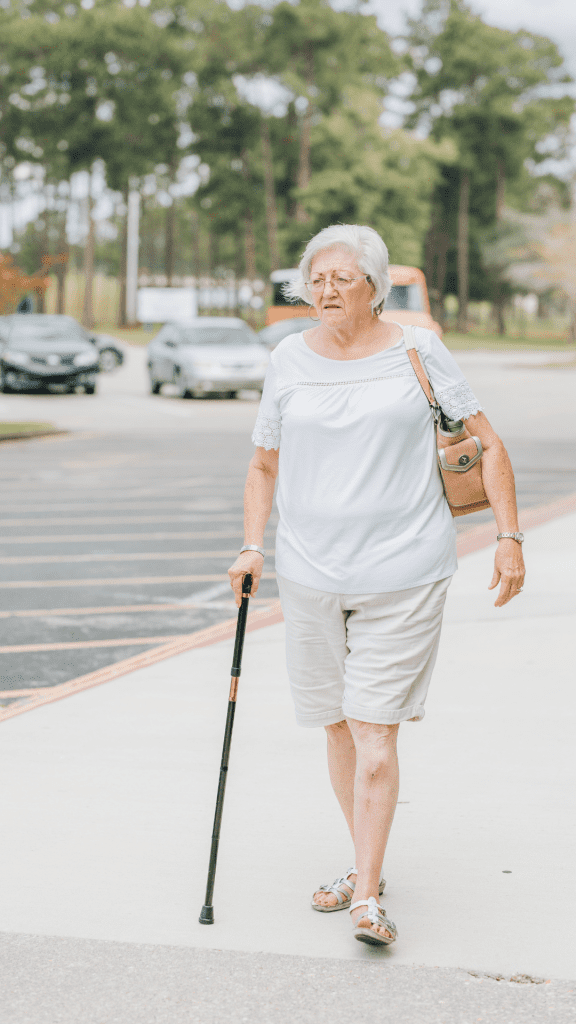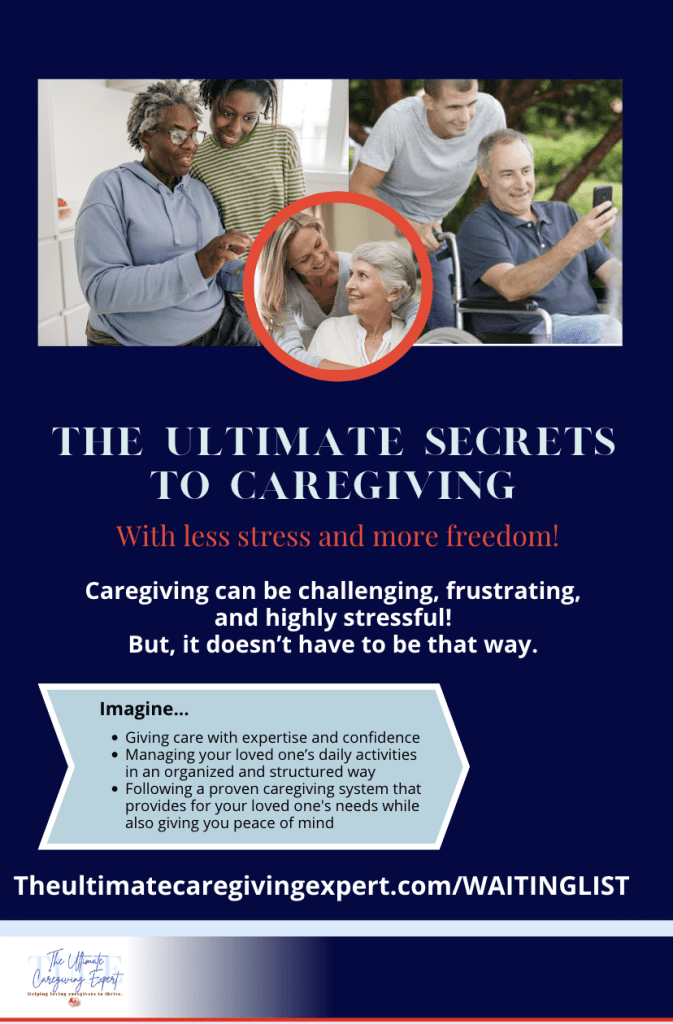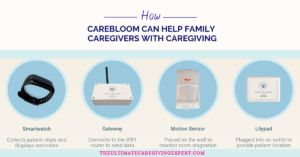Ambulation
Ambulation means the act, action, or instance of moving about or walking, and as we age, this becomes more difficult. However, there is no better way to experience a sense of place than walking. Ambulation is the ability to walk without the need for any assistance. Ambulation is the physical act of walking or moving around. It is an essential part of maintaining physical health, and the ability to move around can help improve quality of life. Regular walks or engaging in physical activities can help improve physical health, mental clarity, and overall well-being. It can also help reduce stress, improve sleep, and improve cardiovascular health. If you cannot walk, you can do many other activities to stay active and keep your body moving.
How Ambulation Assistive Devices Improve Daily Life
Are you or a loved one struggling with limited mobility? Imagine being able to regain your independence and unlock your freedom once again. With ambulation assistive devices, this doesn’t have to be a mere daydream. These revolutionary tools are designed to improve daily life for individuals with mobility challenges, providing support and enhancing mobility.
Ambulation assistive devices come in various forms, ranging from canes and crutches to walkers and wheelchairs. They are specifically designed to cater to different levels of mobility impairment, ensuring that individuals can move around comfortably and confidently.
Whether you’re recovering from an injury, living with a chronic condition, or simply finding it harder to get around with age, ambulation assistive devices can make a significant difference in your daily life. By providing stability, balance, and support, these devices allow you to navigate your surroundings with greater ease, helping you maintain your independence and improve your overall quality of life.
In this article, we will explore the different types of ambulation assistive devices available, their benefits, and how they can empower individuals with limited mobility. Get ready to unlock your freedom and embrace a life of independence.
Understanding Ambulation Assistive Devices
Ambulation assistive devices are specially designed tools that aid individuals with limited mobility in maintaining their independence and improving their overall quality of life. These devices provide stability, balance, and support, enabling individuals to navigate their surroundings with greater ease. Whether you’re recovering from an injury, living with a chronic condition, or simply finding it harder to get around with age, ambulation assistive devices can make a significant difference in your daily life.
One of the most common types of ambulation assistive devices is the cane. Canes are lightweight and portable, making them an ideal choice for individuals who need minimal support. They provide stability and help redistribute weight, making it easier to walk and maintain balance. Canes come in different styles, such as single-point canes, quad canes, and offset canes, each offering varying degrees of support.
Another popular option is crutches, which are commonly used by individuals with more significant mobility challenges. Crutches provide support for the upper body while allowing the individual to bear weight on their arms and hands. They can be adjusted to the user’s height and are available in different types, including underarm crutches and forearm crutches. Crutches require some upper body strength and coordination to use effectively.
Walkers are another type of ambulation assistive device that provides stability and support. These devices typically have four legs and handgrips, allowing individuals to lean on them for balance while walking. Walkers are suitable for those who need more support than a cane but don’t require the same level of upper body strength as crutches. They come in various styles, including standard walkers, rolling walkers with wheels, and wheeled walkers with seats.
For individuals with more severe mobility impairments, wheelchairs offer a comfortable and efficient means of getting around. Wheelchairs come in manual and electric variants, with the latter being powered by a battery. Manual wheelchairs require the user to propel themselves forward, while electric wheelchairs offer greater convenience and independence. Wheelchairs can be customized to fit the user’s specific needs and preferences, with options for different seat widths, backrest heights, and cushioning.
The Impact of Ambulation Assistive Devices on Daily Life
The impact of ambulation assistive devices on daily life cannot be overstated. These devices allow individuals with limited mobility to regain independence and efficiently carry out daily activities. By providing stability, balance, and support, ambulation assistive devices enable individuals to navigate their surroundings, whether it’s at home, work, or in public spaces.
For individuals recovering from injuries or surgeries, ambulation assistive devices play a crucial role in rehabilitation. These devices help individuals regain strength, improve their balance, and gradually regain their ability to walk independently. By providing the necessary support, ambulation assistive devices allow individuals to engage in physical therapy and restore mobility at their own pace.
Ambulation assistive devices also enhance safety and reduce the risk of falls. For individuals with limited mobility, navigating uneven surfaces or negotiating stairs can be challenging and potentially dangerous. Ambulation assistive devices provide the necessary support and stability, reducing the likelihood of accidents and injuries.
Furthermore, ambulation assistive devices promote social engagement and participation. With the ability to move around more easily, individuals can actively participate in social activities, attend events, and spend quality time with friends and family. This improved mobility contributes to greater well-being and overall satisfaction with life.
What to do if ambulation is not a factor
If ambulation is not a factor, many other activities can still help you stay healthy and active. Depending on your circumstances, you might try exercises such as chair exercises, pool exercises, yoga, or Tai Chi. You can also consider joining a local community center or senior center that offers a variety of programs and activities tailored to those unable to ambulate.
What devices can I use for ambulation?
Various devices can be used for ambulation, including walkers, canes, crutches, wheelchairs, and scooters. Each device is designed to offer different levels of mobility and support, so it’s essential to consult with your doctor or physical therapist to determine which one would best suit your needs. Depending on your level of mobility, you may also benefit from using specialized devices such as elbow crutches, knee walkers, or a combination of devices. It’s also important to consider the environment in which you’ll be using the device, as some may be more suitable for indoor or outdoor use.
When assisting your loved one to walk, follow these general rules for ambulation
- Assist your loved one to put on a gait belt if needed for extra support.
- Assist them to the standing position, then count to 10 before proceeding.
- Stand by their weaker side and slightly behind.
- Grasp the gait belt in the back with one hand while placing another hand in front of the collarbone on the weaker side.
- Do not rush your loved one; be patient—allow plenty of time.
- Practice good body mechanics.
- If the patient becomes tired, wait a few moments before proceeding.
- Calmly encourage and reassure the patient, as needed.

Walker
The first thing to remember, walkers, are small metal stands that the patient leans on when walking from place to place. Another critical point, they are used for patients who have difficulty with balance or are weak and need additional support. Also, of all the types of assisting walking devices, walkers offer the most significant amount of stability because they provide four points of support. In addition, some walkers have wheels and are pushed around, some are moved by lifting, and others have seats attached so that the patient may rest when necessary. As a result, the type of walker is ordered by the doctor and usually obtained from a medical supply company. Finally, the physical therapist will instruct the patient and caregiver about the proper technique when using the walker.
How to use a walker
Using a walker can help to improve balance and stability while walking. To use a walker correctly, first, make sure the walker is adjusted to the correct height for you. Your arms should be slightly bent when you grip the handles. Stand with your feet slightly apart and the walker in front of you. Then, take a step forward with your weaker leg while using the walker to support your weight. Move the walker forward with your stronger leg and repeat. To turn, pivot the walker in the direction you wish to turn and step in that direction. If you need to stop, lower the walker to the ground and use it for support as you stand still. Don’t forget to keep your back straight and your head up while using the walker. With practice, you’ll soon be able to use it easily and confidently
Basic guidelines to use the walker correctly and safely for ambulation
- Always stand before grasping the walker; walkers are not meant to support the patient’s weight when rising from a sitting position. However, the patient may use it to pull up to the standing position if you hold it steady; remind the patient that, when unattended, the walker must never be grasped to rise from a sitting position or to lower oneself to a sitting position.
- All four legs of the walker are on the floor in a level position before taking a step; this technique will provide a solid support base.
- The walker without wheels is advanced by picking it up and moving it forward while standing still; this technique will help keep the body in proper position and balance.
- One foot is moved and then the other into the walker after the walker is in the proper position.
- When getting into a chair from the walker, the patient releases the walker, grasps the arms of the chair, and lowers themself into the chair.
Canes
Canes are sticks that patients lean on for balance while walking. If you’re looking for canes, tons of great options are available. You can find a variety of canes in different sizes, colors, and materials to suit your needs best. Additionally, many online retailers offer cane customization to make them even more personal. There are two types:
- Regular—has a curved handle and provides one point of
- Broad-based—has three or four prongs (tripod or quad cane) that give a more significant base of support than the regular
It is essential to realize canes provide limited support to the patient’s weak side. Also, a cane should only be used by patients who can walk without much assistance. Another critical point, like all assisting walking devices, is that the cane must be appropriately fitted to the patient. Finally, the physical therapist can ensure the cane is right and give instructions about its proper use and care.

How to use a cane
Using a cane can be a great way to help improve your balance and stability if you have difficulty walking. Here are some tips to help you get the most out of your cane:
- Make sure that the cane is the correct size. The top of the cane should reach the crease in your wrist when your side relaxes your arm.
- Avoid leaning too heavily on your cane. When walking, use your cane for balance and support, not as a way to move yourself forward.
- Swing your cane in the same direction as your opposite foot. For example, if your right foot moves forward, your left hand and cane should also move forward.
- Don’t forget to use both feet to move forward. Your cane should help balance you, but you should still use your feet to take steps.
- Keep your cane on the weaker side of your body as you walk. This will help to provide the most support and balance.
Following these tips should help you get the most out of your cane and make sure you walk safely and confidently.
Basic guidelines to use a cane correctly and safely for ambulation
- When it is held in the more substantial hand with the elbow slightly bent.
- It is stored in hand opposite the weak leg.
- The rubber cap(s) is in place and replaced when worn.

Crutches
Crutches are a type of assistive device designed to help elderly individuals ambulate more easily and safely. They provide support and balance to help with ambulation, allowing elderly individuals to remain independent and active. Crutches can also help reduce the risk of falls, which can be especially dangerous for the elderly. It’s important for elderly individuals to speak with their doctor or physical therapist to determine the best option for their needs. Point often overlooked, walking aids that are held in place by the arms. As a result, the patient must have strong shoulders, arms, wrists, and hands. Another critical point, at least one leg must be strong enough to bear weight. Finally, other requirements include the ability to stand erect and have good balance and the wearing of sturdy walking shoes.
There are three types of crutches:
- Axillary crutches—made of wood or aluminum and fitted under the arm.
- No axillary crutches (Canadian crutches)—fit halfway between the shoulder and elbow. They are held in place by a cuff that goes around the forearm.
- Adjustable or telescopic crutches—can be adjusted to full length, elbow length, or can be used as a cane.
The doctor will prescribe special exercises to strengthen the muscle of the upper body that will be used to bear weight. The physical therapist will instruct the patient about how to do the exercises, when to practice, and for how long each day. When the patient is strong enough, the therapist selects the type of crutch best suited to the patient’s physical condition. Measuring and fitting the crutch is also the responsibility of the therapist.
How the elderly should use crutches
The elderly should always use crutches with caution and take extra care to ensure their safety. First and foremost, it is important to ensure the crutches are the proper size for the user and that the height can be adjusted to accommodate any changes in height and posture. The user should also ensure that the crutches have non-skid tips and grips for added safety. Additionally, the user should be mindful of their movements and aware of their environment. To ensure the safe use of crutches, the user should always take small steps and move slowly, avoiding any sudden or jerky movements. The user should also be aware of potential obstacles, such as stairs and uneven terrain, and take extra care when navigating them. Finally, it is essential for the elderly to seek medical advice if they experience any pain or discomfort while using the crutches.
Basic guidelines to use crutches correctly and safely for ambulation
- Weight is placed on the upper arms, wrists, and hands—not under the arms;
- The therapist gives instructions that are followed accurately.
- The rubber crutch tips are in place and replaced when worn.
Wheelchair
A wheelchair is a mobility aid that helps elderly people stay active when they can no longer ambulate and independently. It consists of a seat, armrests, and footrests mounted on a frame propelled by either manual or motorized power. Wheelchairs can help the elderly move more easily around their home and sometimes even help them get around outside. The type of wheelchair needed for the elderly depends on their individual mobility needs. Consult a healthcare professional to find the right wheelchair for your elderly loved one.

How can an elderly person use a wheelchair in place of ambulation?
An elderly person can use a wheelchair as an alternative to ambulation by ensuring the wheelchair fits their body properly and is the correct height. The wheelchair should also have a comfortable cushion and adjustable armrests to support the user. They should also ensure that the wheels are properly inflated and the brakes are working correctly. Additionally, a physical therapist or other professional may be able to provide guidance on the best way for the user to transfer safely into and out of the wheelchair. Lastly, it is essential for the user to be aware of their surroundings and ensure that the wheelchair is used safely.
Basic guidelines to use a wheelchair correctly and safely for ambulation
- Always use proper body mechanics when transferring in and out of the wheelchair. This means keeping your back straight and bending at the knees and hips when lifting your body.
- When rolling your wheelchair, keep your back straight and your feet on the footrests.
- Ensure the wheelchair is properly adjusted to fit your body by adjusting the seat and backrest to a comfortable height and width.
- Ensure that the brakes are in the correct position and secure when in the wheelchair.
- Make sure to have a secure grip on the wheelchair at all times.
- Make sure to be aware of your surroundings and be aware of any obstacles or uneven surfaces.
- Avoid making sudden stops or turns, as this can cause the wheelchair to tip over.
- Always use caution when going up and down slopes, steps, or curbs.
- Check your wheelchair regularly for any signs of wear and tear, and ensure the tires are properly inflated.
- Lastly, always follow the instructions provided by the manufacturer of your wheelchair.
A Word of Caution
There may be situations where your loved one has developed poor habits of positioning, lifting, moving, or using assisting devices incorrectly. When you observe this, tactfully explain the dangers to your loved one, why the action is incorrect, and demonstrate the correct method. Then, assist them in practicing the activity until you are sure that they have learned the proper way. If they insist on continuing to perform activities incorrectly, report this to the doctor and physical therapist.
When using an ambulation device, caution is important. Make sure you have a good grip on the device and keep your feet firmly planted on the ground at all times. Walk slowly and carefully, and avoid carrying too much weight. Also, be aware of your surroundings and look for obstacles that could cause you to trip or lose your balance. You can stay safe and prevent any falls or injuries by taking the time to use your ambulation device properly.
Safety tips: Using walkers, canes, crutches, and wheelchair
- That all bolts are tightened, and tips have rubber safety protectors.
- Place walkers, canes, or crutches, when not in use, near your loved one but out of the traffic pattern of the room.
- Assist your loved one in putting on walking shoes—not floppy shoes.
- Remove obstacles from your loved ones’ paths.
- Reinforce the instructions of the physical therapist.
- Do not rush your loved one—allow plenty of time to practice walking.
- Practice using assisting devices when your loved one’s energy level is high.
Conclusion for ambulation devices
In conclusion, ambulatory devices such as canes, walkers, and wheelchairs can benefit those with mobility issues. They can provide much-needed support, stability, and a sense of independence. They are also relatively easy to use and come in various sizes and styles to fit different needs. It is essential to talk to your doctor or physical therapist about which type of ambulation device is best for you, as each person’s needs are unique. With a suitable device, you can experience increased mobility and freedom.
Caregiving can be challenging, frustrating, and highly stressful! But it doesn’t have to be that way.
Imagine:
- Giving care with expertise and confidence.
- Managing your loved one’s daily activities in an organized and structured way.
- Following a proven caregiving system that provides for your loved one’s needs while also giving you peace of mind.






